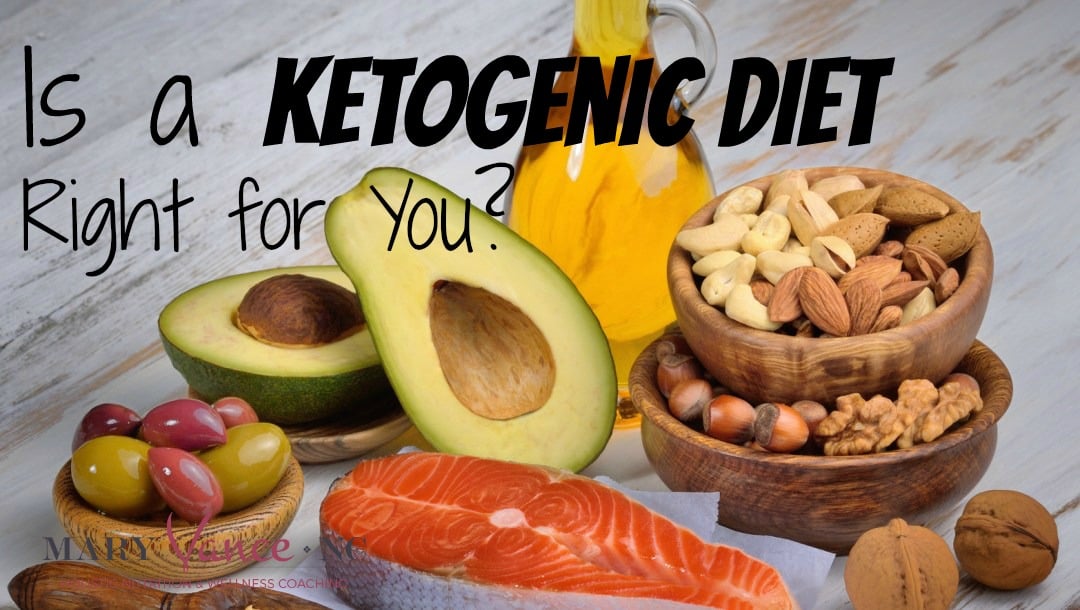Are You Right For The Keto Diet?
By Carol Chuang

These days, it seems like everyone is talking about the ketogenic (in short, keto) diet - the very low-carbohydrate, moderate protein, high-fat eating plan that transforms your body into a fat-burning machine. Hollywood stars and professional athletes have publicly touted this diet's benefits, from losing weight, lowering blood sugar, fighting inflammation, reducing cancer risk, increasing energy, to slowing down aging. So is keto something that you should consider taking on? The following will explain what this diet is all about, the pros and cons, as well as the problems to look out for.
What Is Keto?
Normally, the body uses glucose as the main source of fuel for energy. When you are on a keto diet and you are eating very few carbs with only moderate amounts of protein (excess protein can be converted to carbs), your body switches its fuel supply to run mostly on fat. The liver produces ketones (a type of fatty acid) from fat. These ketones become a fuel source for the body, especially the brain which consumes plenty of energy and can run on either glucose or ketones.
When the body produces ketones, it enters a metabolic state called ketosis. Fasting is the easiest way to achieve ketosis. When you are fasting or eating very few carbs and only moderate amounts of protein, your body turns to burning stored fat for fuel. That is why people tend to lose more weight on the keto diet.
Benefits Of The Keto Diet
The keto diet is not new. It started being used in the 1920s as a medical therapy to treat epilepsy in children, but when anti-epileptic drugs came to the market, the diet fell into obscurity until recently. Given its success in reducing the number of seizures in epileptic patients, more and more research is being done on the ability of the diet to treat a range of neurologic disorders and other types of chronic illnesses.
- Neurodegenerative diseases. New research indicates the benefits of keto in Alzheimer's, Parkinson's, autism, and multiple sclerosis (MS). It may also be protective in traumatic brain injury and stroke. One theory for keto's neuroprotective effects is that the ketones produced during ketosis provide additional fuel to brain cells, which may help those cells resist the damage from inflammation caused by these diseases.
- Obesity and weight loss. If you are trying to lose weight, the keto diet is very effective as it helps to access and shed your body fat. Constant hunger is the biggest issue when you try to lose weight. The keto diet helps avoid this problem because reducing carb consumption and increasing fat intake promote satiety, making it easier for people to adhere to the diet. In a study, obese test subjects lost double the amount of weight within 24 weeks going on a low-carb diet (20.7 lbs) compared to the group on a low-fat diet (10.5 lbs).
-
Type 2 diabetes. Apart from weight loss, the keto diet also helps enhance insulin sensitivity, which is ideal for anyone with type 2 diabetes. In a study published in Nutrition & Metabolism, researchers noted that diabetics who ate low-carb keto diets were able to significantly reduce their dependence on diabetes medication and may even reverse it eventually. Additionally, it improves other health markers such as lowering triglyceride and LDL (bad) cholesterol and raising HDL (good) cholesterol.
-
Cancer. Most people are not aware that cancer cells' main fuel is glucose. That means eating the right diet may help suppress cancer growth. Since the keto diet is very low in carbs, it deprives the cancer cells of their primary source of fuel, which is sugar. When the body produces ketones, the healthy cells can use that as energy but not the cancer cells, so they are effectively being starved to death. As early as 1987, studies on keto diets have already demonstrated reduced tumor growth and improved survival for a number of cancers.
Comparing Standard American, Paleo, & Keto Diets
(As a % of total caloric intake)
__________________________Carbs__________Protein_________Fat
Standard American Diet_____40-60%_________15-30%_________15-40%
Paleo Diet_________________20-40%_________20-35%_________25-50%
Keo Diet________________ __5-10%__________10-15%_________70-80%
The key distinction between the keto diet and the standard American or Paleo diets is that it contains far fewer carbs and much more fat. The keto diet results in ketosis with circulating ketones ranging from 0.5-5.0 mM. This can be measured using a home blood ketone monitor with ketone test strips. (Please know that testing ketones in urine is not accurate.)
How To Formulate A Keto Diet
1. Carbohydrates
For most people, to achieve ketosis (getting ketones above 0.5 mM) requires them to restrict carbs to somewhere between 20-50 grams (g)/day. The actual amount of carbs will vary from person to person. Generally, the more insulin resistant a person is, the more resistant they are to ketosis. Some insulin sensitive athletes exercising vigorously can consume more than 50 g/day and remain in ketosis, whereas individuals with type 2 diabetes and insulin resistance may need to be closer to 20-30 g/day.
When calculating carbs, one is allowed to use net carbs, meaning total carbs minus fiber and sugar alcohols. The concept of net carbs is to incorporate only carbs that increase blood sugar and insulin. Fiber does not have any metabolic or hormonal impact and so do most sugar alcohols. The exception is maltitol, which can have a non-trivial impact on blood sugar and insulin. Therefore, if maltitol is on the ingredient list, sugar alcohol should not be deducted from total carbs.
The level of carbs one can consume and remain in ketosis may also change over time depending on keto adaptation, weight loss, exercise habits, medications, etc. Therefore, one should measure his/her ketone levels on a routine basis.
In terms of the overall diet, carb-dense foods like pastas, cereals, potatoes, rice, beans, sugary sweets, sodas, juices, and beer are not suitable.
Most dairy products contain carbs in the form of lactose (milk sugar). However, some have less carbs and can be used regularly. These include hard cheeses (Parmesan, cheddar), soft, high-fat cheeses (Brie), full-fat cream cheese, heavy whipping cream, and sour cream.
A carb level less than 50 g/day generally breaks down to the following:
-
5-10 g carbs from protein-based foods. Eggs, cheese, and shellfish will carry a few residual grams of carbs from natural sources and added marinades and spices.
-
10-15 g carbs from non-starchy vegetables.
-
5-10 g carbs from nuts/seeds. Most nuts contain 5-6 g carbs per ounce.
-
5-10 g carbs from fruits such as berries, olives, tomatoes, and avocados.
-
5-10 g carbs from miscellaneous sources such as low-carb desserts, high-fat dressings, or drinks with very small amounts of sugar.
Beverages
Most people require at least half a gallon of total fluid per day. The best sources are filtered water, organic coffee and tea (regular and decaf, unsweetened), and unsweetened almond and coconut milk. Diet sodas and drinks are best avoided as they contain artificial sweeteners. If you drink red or white wine, limit to 1-2 glasses, the dryer the better. If you drink spirits, avoid the sweetened mixed drinks.
2. Protein
A keto diet is not a high protein diet. The reason is that protein increases insulin and can be converted to glucose through a process called gluconeogenesis, hence, inhibiting ketosis. However, a keto diet should not be too low in protein either as it can lead to loss of muscle tissue and function.

The average adult requires about 0.8-1.5 g per kilogram (kg) of lean body mass per day. It is important to make the calculation based on lean body mass, not total body weight. The reason is because fat mass does not require protein to maintain, only the lean muscle mass.
For example, if an individual weighs 150 lbs (or 150/2.2 = 68.18 kg) and has a body fat content of 20% (or lean body mass of 80% = 68.18 kg x 0.8 = 54.55 kg), the protein requirement may range from 44 (= 54.55 x 0.8) to 82 (= 54.55 x 1.5) g/day.
Those who are insulin resistant or doing the keto diet for therapeutic reasons (cancer, epilepsy, etc.) should aim to be closer to the lower protein limit. The higher limit is for those who are very active or athletic. For everyone else who is using the keto diet for weight loss or other health benefits, the amount of daily protein can be somewhere in between.
Best sources of high quality protein include:
- Organic, pastured eggs (6-8 g of protein/egg)
- Grass-fed meats (6-9 g of protein/oz)
- Animal-based sources of omega-3 fats, such as wild-caught Alaskan salmon, sardines, and anchovies, and herrings. (6-9 g of protein/oz)
- Nuts and seeds, such as macadamia, almonds, pecans, flax, hemp, and sesame seeds. (4-8 g of protein/quarter cup)
- Vegetables (1-2 g of protein/oz)
3. Fat
Having figured out the exact amounts of carbs and protein to eat, the rest of the diet comes from fat. A keto diet is necessarily high in fat. If sufficient fat is eaten, body weight is maintained. If weigh loss is desired, one should consume less dietary fat and rely on stored body fat for energy expenditure instead.
(As a % of total caloric intake)
_________________________Maintain Weight_______Lose Weight
Carbs____________________5-10%________________5-10%
Protein__________________10-15%_______________10-15%
Fat from diet_____________70-80%_______________35-40%
Fat from stored body fat___0%___________________35-40%
For individuals who consume 2,000 calories a day to maintain their weight, daily fat intakes range from about 156-178 g/day. For large or very active individuals with high energy requirements who are maintaining weight, fat intakes may even exceed 300 g/day.
Most people can tolerate high intakes of fat, but certain conditions such as gallbladder removal may affect the amount of fat that can be consumed at a single meal. In which case, more frequent meals or use of bile salts or pancreatic enzymes high in lipase may be helpful.
Avoid eating undesirable fats such as trans fat, highly refined polyunsaturated vegetable oils, as well as high amounts of omega-6 polyunsaturated fats.
Best foods to obtain high quality fats include:
- Avocados and avocado oil
- Coconuts and coconut oil
- Grass-fed butter, ghee, and beef fat
- Organic, pastured heavy cream
- Olive oil
- Lard from pastured pigs
- Medium chain triglycerides (MCTs)
MCT is a specific type of fat that is metabolized differently from regular long-chain fatty acids. The liver can use MCTs to rapidly produce energy, even before glucose, thus allowing an increased production of ketones.
Concentrated sources of MCT oil are available as supplements. Many people use them to help achieve ketosis. The only food that is uniquely high in MCTs is coconut oil. About two-thirds of the coconut fat is derived from MCT.
Who Should Be Cautious With A Keto Diet?
For most people, a keto diet is very safe. However, there are certain individuals who need to take special care and discuss with their doctors before going on such a diet.
- Those taking medications for diabetes. Dosage may need to be adjusted as blood sugar goes down with a low-carb diet.
-
Those taking medications for high blood pressure. Dosage may need to be adjusted as blood pressure goes down with a low-carb diet.
- Those who are breastfeeding should not go on a very strict low-carb diet as the body can lose about 30 g of carbs per day via the milk. Therefore, have at least 50 g of carbs per day while breastfeeding.
- Those with kidney disease should consult with their doctors before doing a keto diet.
Common Concerns With A Keto Diet
- Not being able to reach ketosis. Make sure you are not eating too much protein and there is no hidden carbs in the packaged foods that you consume.
- Eating the wrong kinds of fat such as the highly refined polyunsaturated corn and soybean oils.
- Symptoms of a "keto-flu", such as feeling light-headed, dizziness, headaches, fatigue, brain fog, and constipation. When in ketosis, the body tends to excrete more sodium. If one is not getting enough sodium from the diet, symptoms of a keto-flu may appear. This is easily remedied by drinking 2 cups of broth (with added salt) per day. If you exercise vigorously or the sweat rate is high, you may need to add back even more sodium.
- Dawn effect. Normal fasting blood sugars are less than 100 mg/dl and most people in ketosis will achieve this level if they are not diabetic. However, in some people fasting blood sugars tend to increase, especially in the morning, while on a keto diet. This is called the "dawn effect" and is due to the normal circadian rise in morning cortisol (stress hormone) that stimulates the liver to make more glucose. If this happens, make sure you are not consuming excessive protein at dinner and not too close to bedtime. Stress and poor sleep can also lead to higher cortisol levels. If you are insulin resistant, you may also need more time to achieve ketosis.
- Low athletic performance. Keto-adaptation usually takes about 4 weeks. During which, instead of doing intense workouts or training, switch to something that is less vigorous. After the adaptation period, athletic performance usually returns to normal or even better, especially for endurance sports.
- Keto-rash is not a common side effect of the diet. Probable causes include production of acetone (a form of ketone) in the sweat that irritates the skin or nutrient deficiencies including protein or minerals. Shower immediately after exercise and make sure you eat nutrient dense whole foods.
- Ketoacidosis. This is a very rare condition that occurs when blood ketone levels go above 15 mM. A well-formulated keto diet does not cause ketoacidosis. Certain conditions such as type 1 diabetes, being on medications with SGLT-2 inhibitors for type 2 diabetes, or breastfeeding require extra caution. Symptoms include lethargy, nausea, vomiting, and rapid shallow breathing. Mild cases can be resolved using sodium bicarbonate mixed with diluted orange or apple juice. Severe symptoms require prompt medical attention.
Is Keto Safe For Long-Term?
This is an area of some controversy. Though there have not been any studies indicating any adverse long-term effects of being on a keto diet, many experts now believe that the body may develop a "resistance" to the benefits of ketosis unless one regularly cycles in and out of it. In addition, eating a very high-fat diet in the long-term may not be suitable for all body types.
Cyclical keto diet
Once you are able to generate over 0.5 mM of ketones in the blood on a consistent basis, it is time to start reintroducing carbs back into the diet. Instead of eating merely 20-50 g of carbs/day, you may want to increase it to 100-150 g on those carb-feeding days. Typically, 2-3 times a week will be sufficient. Ideally, this is also done on strength training days on which you actually increase your protein intake.
This approach of cycling may make the diet plan more acceptable to some people who are reluctant to permanently eliminate some of their favorite foods. However, it may also lower resolve and commitment to the keto diet or trigger binges in susceptible individuals.
Carol Chuang is a Certified Nutrition Specialist. She has a Masters degree in Nutrition and is a Certified Gluten Practitioner. She specializes in Metabolic Typing and Functional Diagnostic Nutrition.
 Part of the reason visceral fat is particularly dangerous is that studies show that it releases more inflammatory molecules into your system on a consistent basis.
Part of the reason visceral fat is particularly dangerous is that studies show that it releases more inflammatory molecules into your system on a consistent basis.









.jpg)




















